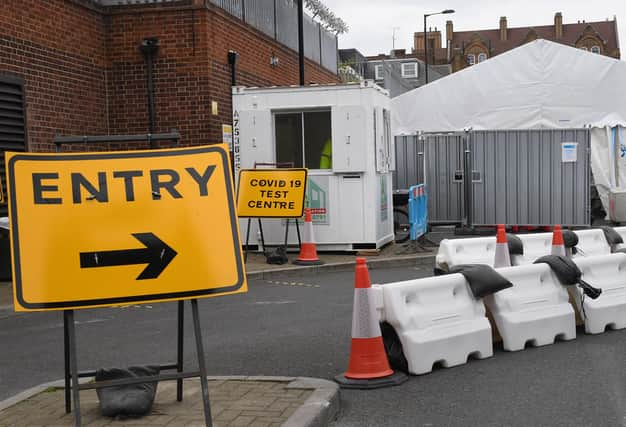186 further coronavirus cases in Crawley


The number of coronavirus cases in Crawley increased by 186 in the last 24 hours, official figures show.
A total of 37,872 cases had been confirmed in Crawley when the UK coronavirus daily dashboard was updated on March 22 (Tuesday), up from 37,686 on Monday.
Advertisement
Hide AdAdvertisement
Hide AdThe cumulative rate of infection in Crawley, which covers the whole pandemic, stands at 33,672 cases per 100,000 people, far higher than the England average of 30,401.
In England, Scotland and Northern Ireland, if one person tests positive for the virus more than 90 days after the first infection, two infection episodes will be recorded, according to the UK Health Security Agency.
Across the UK, the number of recorded cases increased by 94,297 over the period, to 20,413,731.
There were no new coronavirus deaths recorded in the latest 24-hour period in Crawley.
Advertisement
Hide AdAdvertisement
Hide AdThe dashboard shows 240 people had died in the area by March 22 (Tuesday) – which was unchanged from Monday.
It means there have been no deaths in the past week, which is the same as the previous week.
They were among 20,988 deaths recorded across the South East.
The figures include anyone who died within 28 days of a positive test result for Covid-19, and whose usual residence was in Crawley.
Advertisement
Hide AdAdvertisement
Hide AdDaily death counts are revised each day, with each case backdated to the actual date of death, so some areas might see their figures revised down.
The figures also show that more than half of people in Crawley have received a booster dose of a Covid-19 vaccine.
The latest figures show 60,599 people had received a booster or third dose by March 21 (Monday) – 57% of those aged 12 and over, based on the number of people on the National Immunisation Management Service database.
A total of 80,998 people (76%) had received two jabs by that date.
Advertisement
Hide AdAdvertisement
Hide AdAcross England, 67% of people aged 12 and above had received a booster.
Unlike at local level, the national rate was calculated using mid-2020 population estimates from the Office for National Statistics.